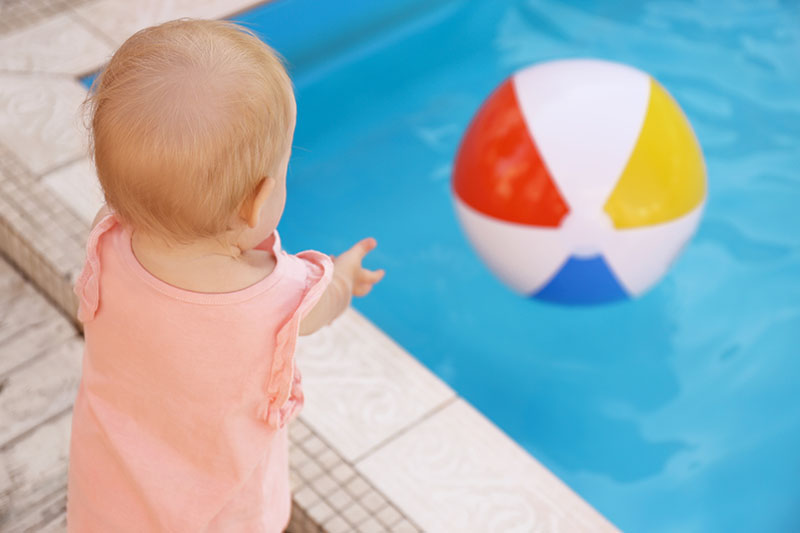
Drowning Is Fast and Silent: Harris County Urges Vigilance as Raintree Village Families Head to the Water This Summer
As temperatures rise and the school year ends, families across Harris County, including those in Raintree Village are heading outside to enjoy pools, lakes, and water parks—but local officials are issuing a serious reminder: drowning is quick, silent, and more common than many realize.
Harris County Public Health (HCPH) is amplifying water safety education as summer officially begins, emphasizing that more children between ages 1 and 4 die from drowning than any other cause of death in the U.S., according to the Centers for Disease Control and Prevention (CDC). For kids aged 5 to 14, it’s the second leading cause of unintentional injury death, following car accidents.
The message is especially urgent in Harris County, where 25 children drowned in 2023 alone—part of the 90 tragic fatalities across Texas, as reported by the Texas Department of Family and Protective Services (DFPS).
“Tragedies are preventable,” said Scott Jeansonne, Environmental Public Health Director at HCPH. “With summer on the horizon and more residents enjoying water recreation, it's crucial to prioritize water safety measures and ensure everyone stays safe while having fun.”
Mobile Sidebar Ad
Pools Are Everywhere—So Are the Risks
Whether your family is swimming in your own backyard pool, at a neighbor’s home, a community center, or a country club, the risks are the same—and preventable.
Drowning can happen in seconds, often without a splash or a cry for help. That’s why constant, close supervision is essential, even when lifeguards are present. HCPH strongly urges parents and caregivers to designate a responsible adult “water watcher” who avoids distractions like phones, alcohol, or reading.
Even when lifeguards are nearby, don’t assume your child is being watched. Consider coordinating a designated a water watcher when swimming at your neighborhood pool.
Backyard Pools Require Layers of Protection
Homeowners should take extra precautions around private pools. This includes installing a four-sided fence—at least four feet high—with self-closing and self-latching gates. Make sure pool toys are removed after use to avoid tempting unsupervised children back into the water.
In addition, families should ensure pool drains are visible and covered with secure, well-maintained grates. Functional rescue equipment like a life ring or reaching pole should always be nearby, along with a phone to call 911 in case of emergency.
Remove pool toys, floats and other items from the pool when swim time concludes. Leaving these items in the pool can lure young children into the water as they try to grasp for the objects. Also, floats can cover a considerable amount of surface area, making it difficult to see a child who might have fallen into the pool.
Mobile Sidebar Ad
Life Jackets and Swimming Lessons Save Lives
Children who cannot swim should wear U.S. Coast Guard-approved life jackets—not inflatable toys, which are not designed as safety devices. Even confident swimmers benefit from swimming with a buddy and choosing locations with lifeguards when possible.
Formal swimming lessons, starting at an early age, are one of the most effective ways to reduce drowning risk. However, even children who have completed lessons require constant supervision.
CPR Knowledge Is Crucial
Learning CPR can mean the difference between life and death. Immediate intervention can buy crucial minutes before emergency responders arrive. Local organizations like the American Red Cross and your local fire department offer accessible CPR certification classes throughout the county.
Awareness Is Key—Even Beyond the Pool
While pools are the most visible danger, HCPH also reminds residents of risks in less obvious places. Always empty bathtubs and buckets after use, close toilet lids, and keep bathroom doors shut. Be extra vigilant when visiting unfamiliar homes or vacation rentals, especially if they have unfenced pools.
Natural bodies of water, such as Lake Conroe or the beach in Galveston, add their own hazards—including hidden currents, sudden drop-offs, and limited visibility. Always check weather conditions before swimming, and use life jackets even for short boat rides.
A County-Wide Commitment to Prevention
HCPH’s summer outreach campaign aims to reduce child drownings through education and community action. Their full list of water safety tips is available at hcphtx.org/WaterSafety, and the CDC offers additional guidance at cdc.gov/drowning/prevention.
As summer kicks off in neighborhoods from Cypress to Pasadena and everywhere in between, water safety awareness can be lifesaving.
 Tiffany Krenek has been on the My Neighborhood News team since August 2021. She is passionate about curating and sharing content that enriches the lives of our readers in a personal, meaningful way. A loving mother and wife, Tiffany and her family live in the West Houston/Cypress region.
Tiffany Krenek has been on the My Neighborhood News team since August 2021. She is passionate about curating and sharing content that enriches the lives of our readers in a personal, meaningful way. A loving mother and wife, Tiffany and her family live in the West Houston/Cypress region.








